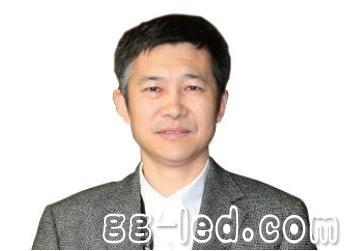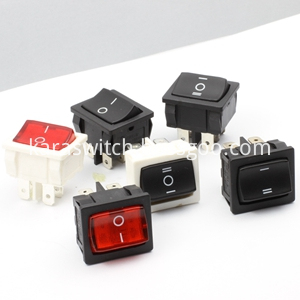Dialogue Dong Zhijiang

1. What do you think Dong Dong thinks is the biggest problem in the current chip industry? What is your judgment on the development trend of the chip market in the second half of this year and the next two years?
The biggest problem facing the chip industry today is the overcapacity caused by subsidies for the purchase of MOCVD equipment. The subsidy began in 2009, and adopted a variety of methods including technology and technology. The company exchanged high expectations and high tax revenue expectations with local government's huge subsidies and application engineering orders. In spite of the reality of overcapacity of upstream chips, neighbors are mad, crazy. Expansion, pursuing the so-called market share by not complying with market rules.
Subsidies that have been going on for five years and continue to be a source of chaos are the direct result of serious unfair competition in the industry, overcapacity and huge waste of social resources, with disastrous consequences for the industry. In the early years, the Chinese people’s "double opposition" to Europe and the United States always thought that others were blaming us for bullying us. Now, if we look at the heavily polluted air soil and water sources, we should have an answer. China should legislate against unfair competition and unfair competition, otherwise it will be difficult to achieve a change in development mode and innovation drive.
Europe, the United States and Japan, including Taiwan's LED industry, after years of adjustment, have entered a state of benign interaction. The domestic LED lighting market will continue to strengthen, but due to the above problems, there are still many challenges and variables. We call on upstream enterprises to be self-disciplined, and we must respect the laws governing the development of the industry. Otherwise, it will harm others.
2. What do you think about the recent action of the acquisition of Yuanyuan Optoelectronics by Jingyuan Optoelectronics? What impact will the follow-up bring to the LED chip landscape?
The acquisition of Yuyuan Optoelectronics by Jingyuan Optoelectronics shocked the industry, which will minimize the disorderly competition of Taiwanese chips and reflect the wisdom and maturity of Taiwanese enterprises. It is worthy of recognition!
Jingyuan Optoelectronics 385 MOCVD, the world's largest production capacity, selling chips of 4.5 billion yuan a year, still choose to cooperate to expand and pursue common development. The 103 MOCVD of Huanyuan Optoelectronics has lost three years, indicating that the machine does not allow enterprises to enter the safe. On the other hand, it is the sorrow of the practitioners that the domestic enterprises are doing the opposite and disregarding the economic benefits and blindly saving money! The chip industry is indeed a high-input industry. It has proved that it is impossible to increase its capital investment in order to suppress its own expansion.
The formation of the domestic chip sector comes from three waves of investment: the first wave is the college wave, the transformation of the industrialization results of universities and research institutes; the second wave is the entrepreneurial wave, the entrepreneurs in the industry start the business; the third wave is the subsidy wave, which is encouraged by local government equipment subsidies. In general, chip companies are too many and too miscellaneous, and disorderly competition is vicious. As a veteran who experienced the first two or three wave tides, sometimes it is really a feeling: the rhetoric is still in the ear, and the flowers are like water. I hope this event will give the industry a revelation and follow the trend to make the right choice.
3. At present, the profit status of chip companies is not optimistic. How do you think LED chip factories will break through the profit bottleneck in the future? What are the possible ways?
Now that the lighting market is gradually opening up, companies are also working hard, and the main reason for the lack of optimism in profitability is disorderly competition. This is a common problem, including companies that claim good-looking statements, removing subsidies and high-priced application engineering orders, which is the profit that companies can continue to earn. The so-called big tide recedes, only to know who is swimming naked! Only mutual cooperation between chip factories to reduce costs and even capital integration is the solution.
4. What do you think is the future survival of domestic second-tier chip companies? Is it focused on market segmentation or through group integration or in other ways? May I ask if Diyuan Optoelectronics will join the capital integration in the future? What is the reason?
I have always opposed the division of chip factories into one or two lines according to the number of machines, because that is not scientific! The price of a single MOCVD device from the LED white light chip has not only declined in the past 20 years, but has risen from more than 1 million to more than 2 million US dollars, while the price per chip of the unit area is 1/100 of the original price! This has caused more machines. Instead, there is actually no strange phenomenon of economies of scale. Round is a living example! Many people don't understand this and enter the misunderstanding of adding a machine to the front line through desperate investment. There are 103 MOCVD in the round, which is the second in the country. It shows that the number of machines in the chip field is not the only standard. The enterprise's operation from research and development to sales is the core competitiveness. The scale of the enterprise has its advantages and difficulties; the small scale is also easy and embarrassing. Regardless of size, we should open our minds, revitalize the capital stock, and win-win cooperation. Diyuan will firmly choose to join the ranks of capital integration, because this is the only correct choice for the development of industry enterprises.
5. Since last year, some chip companies have started a new wave of expansion, and some chip factories are relatively cautious about expanding production. What do you think of this? Will there be overcapacity in the future LED chip market, and why?
Funds entering the chip field have never been lacking. Comparing the chip investment amount and the total chip output value, it can be clearly seen that there is always an investment bubble here, but only due to the rapid development of the industry, some bubbles are gradually absorbed. Now the chip factory is roughly divided into three factions: the crazy faction - for the immediate interests or the illusory future interests, regardless of the facts; follow the trend - not economic benefits, you vote for me also cast; rationalism. If the equipment subsidy is still crazy and follow-up, the overcapacity in the chip market is inevitable, and the big market can't satisfy the growing desire. But time is the best teacher, or change, or eliminate!

Kara offers a wide range of illuminated and non-illuminated Rocker Switches.Ranging from 1 to 6 poles,4VA to 30 amp,with many styles of colors and functions,especially the switches with High-Current used very widely in the welding machines. Certifications include UL, CSA, TUV, CE, and more. Kara Rocker Switches include the KR1-Series abd KR2- Series based on different size of the panel cut-out.

Rocker Switch,Waterproof Rocker Switch,Rocker Switch 3 Pin,Rocker Switch 4 Pin
Ningbo Kara Electronic Co.,Ltd. , https://www.kara-switch.com